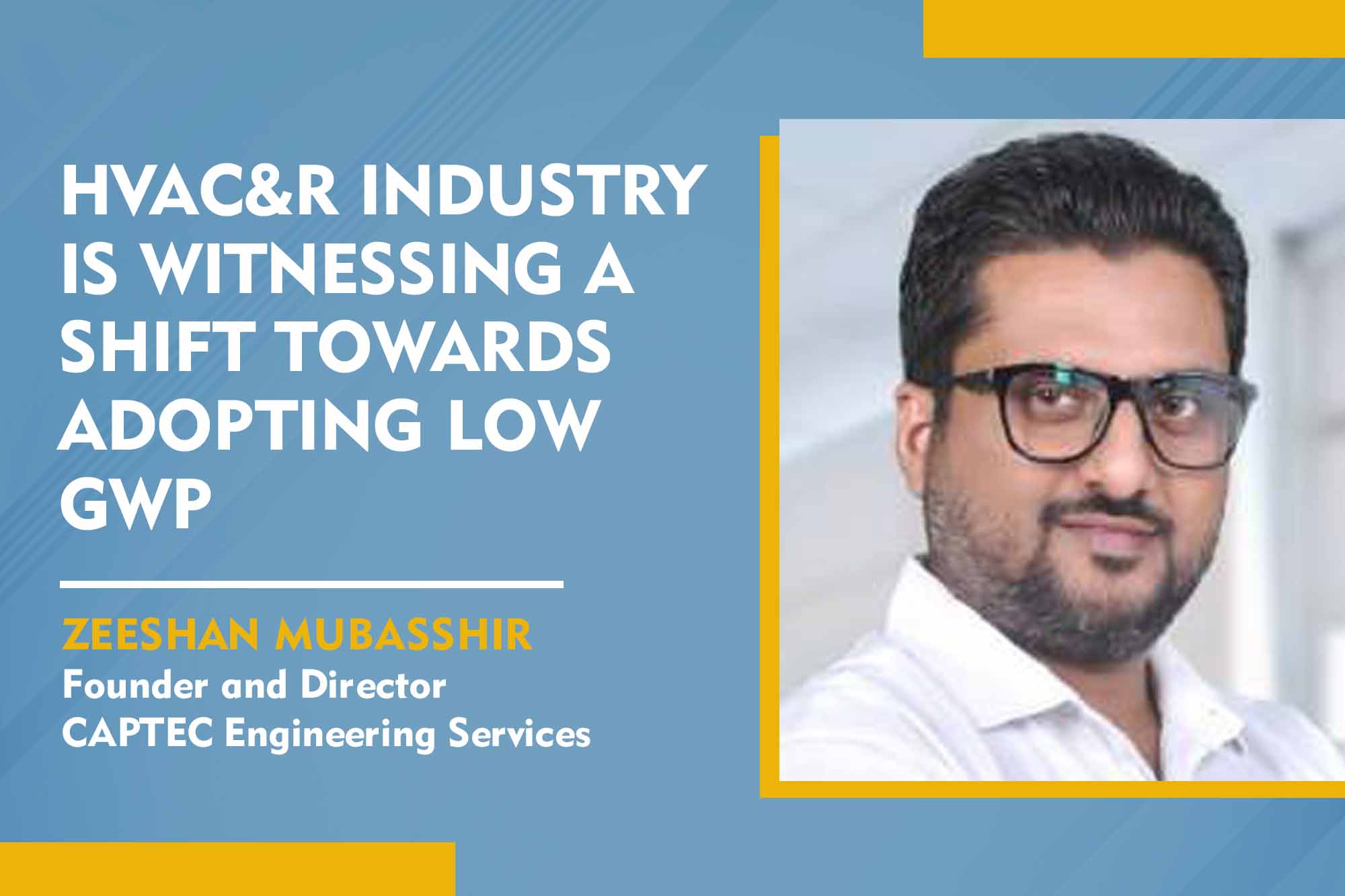Zeeshan Mubasshir, Founder and Director at CAPTEC Engineering Services, discusses the latest advancements in variable-speed compressors in HVAC technologies. These compressors have revolutionised energy efficiency by altering their speed to fit the heating or cooling demands of space.
What are the latest advancements in variable-speed compressors driving energy efficiency in HVAC technologies?
Variable-speed compressors have transformed HVACR technology, increasing energy efficiency by adjusting their speed to meet a space’s heating or cooling needs. Recent developments have focused on enhancing control algorithms, motor efficiency, and integrating intelligent building management systems. For example, manufacturers use advanced control strategies, such as predictive algorithms, to anticipate load changes and optimise compressor performance accordingly.
What innovative approaches can be applied to HVAC equipment design for efficient building practices?
Innovative concepts in HVAC equipment design for efficient building practices include optimising the building load using the following strategies: Insulation High-quality materials reduce heat transfer through walls, ceilings, and floors. Energy-efficient windows with low-E coatings and several glazing layers minimise heat gain and loss. Window treatments, such as blinds or shades, can help reduce heat absorption through windows. Reflective or cool roofing materials minimise heat absorption. Orientation and shading Proper building layout and shading devices reduce direct solar exposure.
It is also critical to develop suitable system architectures to improve airflow distribution, use sophisticated heat exchanger designs to increase heat transfer efficiency, and add energy recovery systems to capture and reuse waste heat. Furthermore, there is a rising emphasis on modular and scalable designs to accommodate changing building needs and facilitate installation and maintenance.
Please discuss measuring instruments that help maintain optimal conditions in HVAC systems.
Measuring devices are essential for keeping HVAC systems operating at peak efficiency. Thermometers and hygrometers are the most common instruments used to measure temperature and humidity levels. Manometers that measure air pressure differentials. Anemometers for measuring airflow velocity. Gas analysers for determining combustion efficiency and indoor air quality (IAQ). Thermal imaging cameras can detect heat loss and indicate potential problems with HVAC components.
These devices assist HVAC personnel in correctly diagnosing problems, tuning systems for peak performance, and ensuring compliance with industry standards and regulations.
How do HVAC manufacturers ensure predictive maintenance enabled by advanced sensors and data analytics?
Manufacturers assure predictive maintenance in HVACR systems using modern sensors and data analytics by installing sensors throughout the system to capture real-time data on temperature, pressure, vibration, and energy use. This data is then evaluated using advanced algorithms to detect patterns, trends, and anomalies that may suggest problems or inefficiencies. Predictive maintenance approaches enable preventive service and component replacement before failures occur, decreasing downtime and operating costs.
How do smart thermostats and building automation systems enhance HVAC efficiency and remote monitoring of HVACR systems?
Smart thermostats and building automation systems enhance HVAC efficiency and remote monitoring by providing greater control over temperature settings, scheduling, and energy usage. These systems leverage advanced sensors, wireless connectivity, and cloud-based analytics to optimise HVAC operations based on occupancy patterns, weather forecasts, and user preferences. By integrating with smart meters and energy management platforms, building automation systems enable remote monitoring and control of HVAC systems. This allows facility managers to identify energy-saving opportunities, troubleshoot issues remotely, and adjust settings in real time to optimise performance.
Please brief us about new trends in condensing units and low GWP refrigerant usage in HVAC&R systems.
In India, the HVAC&R industry is witnessing a shift towards adopting low Global Warming Potential (GWP) refrigerants and energy-efficient condensing units. With increasing environmental awareness and regulatory pressure, there’s a growing preference for refrigerants such as hydro-fluoro-olefins (HFOs), hydrocarbons (HCs), and natural options like CO2 and ammonia. Manufacturers are integrating smart technologies, including IoT sensors and predictive analytics, into condensing units for real-time monitoring and remote diagnostics, enhancing system reliability and energy efficiency. Modular and scalable designs are gaining popularity because they allow for greater system configuration flexibility and simpler maintenance. In addition, there is a focus on heat recovery technology to use waste heat properly. Compliance with local and international norms and regulations remains a top concern, demonstrating the industry’s dedication to sustainability and environmental stewardship.
Please discuss the air purification technologies used in HVACR systems to improve IAQ.
In India, HVAC&R systems use various air filtration methods to improve indoor air quality. These include HEPA filtration for capturing particles, UV-C germicidal irradiation to neutralise pathogens, ionisation for reducing airborne contaminants, activated carbon filtration for removing odours and VOCs, photocatalytic oxidation (PCO) for breaking down organic compounds, and ozone generation for odour and bacteria neutralisation. These technologies are integrated into commercial, residential, healthcare, and industrial HVAC systems to mitigate indoor air pollutants, ensuring healthier indoor environments for occupants.
Cookie Consent
We use cookies to personalize your experience. By continuing to visit this website you agree to our Terms & Conditions, Privacy Policy and Cookie Policy.












